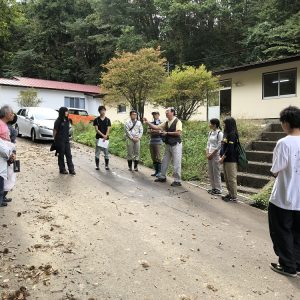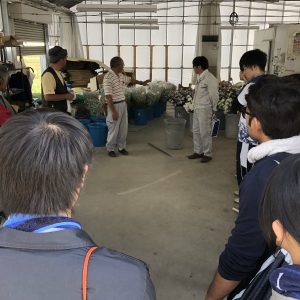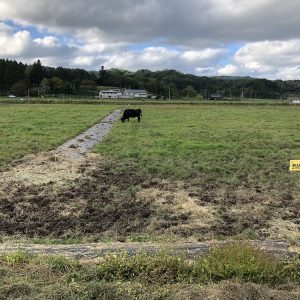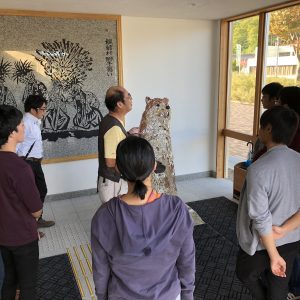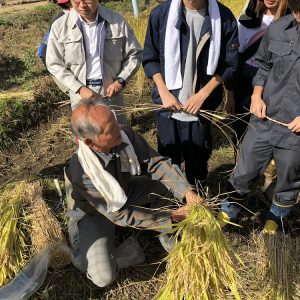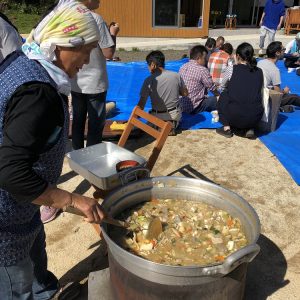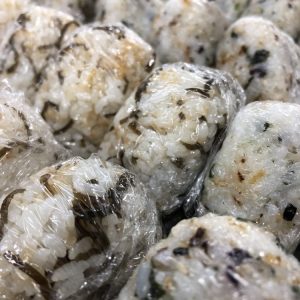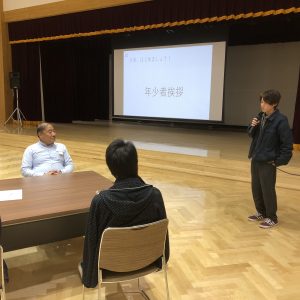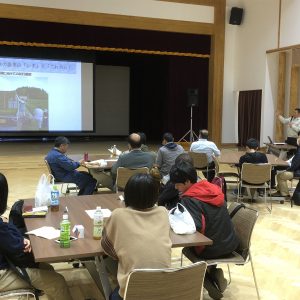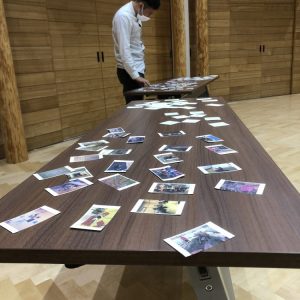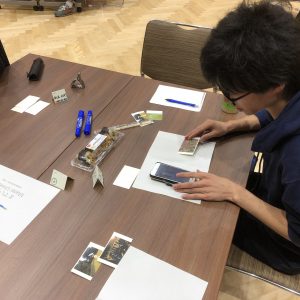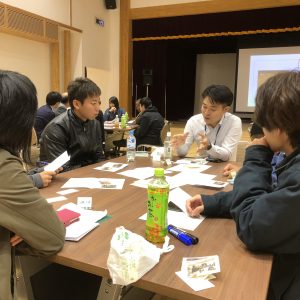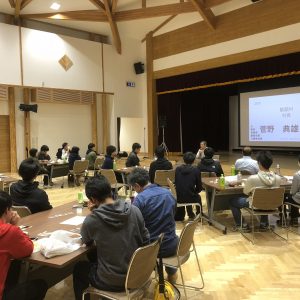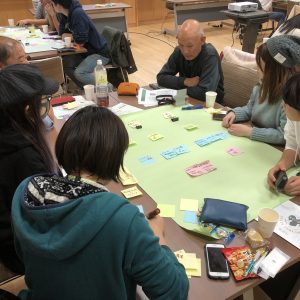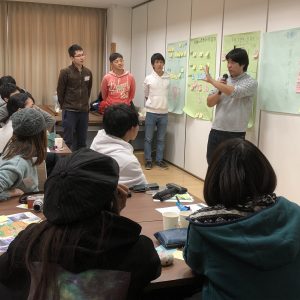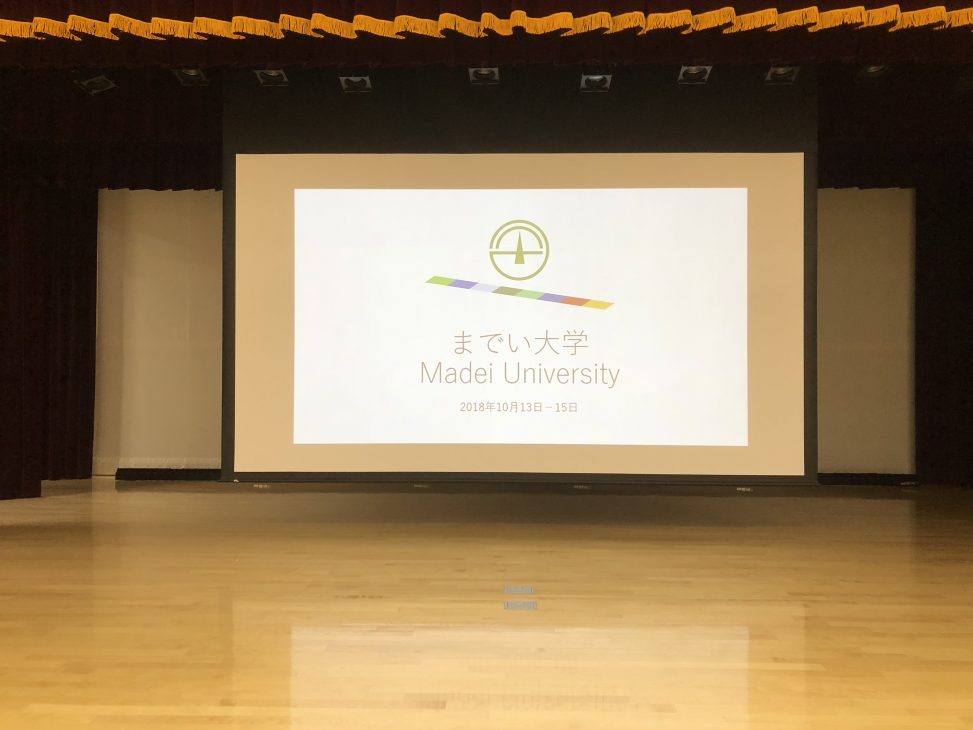
Madei University: The Revitalization of Iitate Using Traditional Knowledge and Advanced Technology
Radioactive substances (mainly radioactive cesium of cesium 134 and cesium 137) are released into the environment as a result of the TEPCO Fukushima Daiichi nuclear accident (hereinafter referred to as the nuclear accident) caused by the Great East Japan Earthquake on March 11, 2011. The village of Iitate in Fukushima Prefecture is one of the areas that has suffered from that accident because of its radioactive contamination. We have discussed the restoration of Iitate since 2012 in a series of group works. Immediately after the nuclear accident, Iitate-based farmers’ own farmland decontamination method was developed in collaboration with NPO corporations, and crop cultivation has been repeatedly tried each year.
Based on this series of activities, it was concluded that the most important thing to consider for this region’s restoration is to nurture the young people whose challenge is the creation of a new type of Japanese agriculture that accounts for the handicap of having radioactive contaminated land. Therefore, this workshop focuses on promoting the revival of Iitate from the viewpoint of technological decontamination, from the viewpoint of nurturing young people who will be responsible for the next generation, and to unify the university knowledge that has been accumulated so far into the traditional knowledge historically accumulated in the village.
This project, which was held in Iitate, was divided into three schedules and conducted so that college students from across the country could choose a schedule that suited them. The basic composition of the two days was a fieldtrip within the village on the first day and a workshop on the second day. However, on October 7, instead of the workshop, we had the experience of harvesting with the local farmers. The entire process of this workshop can be followed by searching the Twitter hashtag: “#madeiuni”. Examples of the places visited during the fieldtrip include the Soil Museum (where you can learn about the current situation of agricultural land in the field, the condition of the underground soil, and the underdrain drainage technology), the houses of farmers cultivating kasumi grass (gypsophila), and the “decontamination experiment site” in the forest. After attending a lecture in the village office, the workshop on the second day was held at the “Fure Ai Kan” community hall. The workshop in October asked participants “how to be associated with Iitate,” and in November we held a discussion with residents, with the theme of “designing the future of Iitate.”
The final outcome of this workshop was different in October and November. In October, participants submitted a worksheet in which they considered “how to build closer ties,” based on the daily lives of participants themselves in Tokyo and other areas and the situation seen in Iitate. In November, an action plan for the future image of Iitate discussed by each group of participants and residents was submitted. These results, along with analysis of a questionnaire taken before and after the workshop, will be fed back to the people of Iitate and will be used as part of the village’s sixth comprehensive promotion plan.
企画の背景
2011年3月11日の東日本大震災に伴う東京電力福島第一原発事故(以下、原発事故)により、放射性物質(主にセシウム134とセシウム137の放射性セシウム)が環境中に放出され、広大な地域が汚染された。原発事故のすぐ後から、福島県飯舘村の現場においてはNPO 法人と協働で農民自身でできる農地除染法が開発され、作物栽培が重ねてこられた。この一連の活動からは、地域再生を考える上で最も重要なのは放射能汚染地というハンデにめげずに新しい日本型農業の創設にチャレンジする若者を育成することにあるという考えが導出された。すなわち、本ワークショップは飯舘村の復興を単なる技術的な除染という視点でとらえるのでなく、次世代を担う若者の育成という視点から進めることを主眼とし、これまでに蓄積されてきた大学知を教育活動にも展開し、飯舘村の現地をフィールドとして多くの学生と地域住民を巻き込んだ、伝統と最先端ICT の融合による地域復興のあり方を考えることを目的とする。
どんなワークショップ?
福島県飯舘村を舞台に行われた本企画は、3つの日程に分けられ、全国各地の大学生が都合に合う日程に参加できる形で執り行われた。基本的な2日間の構成としては、まず初日に村内見学を行い、2日目にワークショップを行った。ただし、10月7日においては、ワークショップの代わりに現地農家の方のご協力により稲刈り体験を行った。なお、本ワークショップの全行程は、Twitter の「#までい大学」で検索することで、追えるようになっている。村内見学先には、例えば現地における農地の現状や地下の土の状態、暗渠排水技術の知識を学ぶことができる「土壌博物館」や、帰村後かすみ草を育てている農家さんのハウス、屋敷林の除染実験地などが含まれた。2日目のワークショップは、「ふれ愛館」(公民館)で行われ、村役場の方からご講演を頂いた上で、10月のものは「飯舘村との“寄り添い”方を模索する」を、11月のものは「飯舘村の将来を設計する」をテーマとして、住民の方々を交えたディスカッションを行った。
プログラム
| 2018.10.6-7(土-日) | ||
|---|---|---|
| 1日め | 村内見学 | |
・松塚の土壌博物館を見学 | ||
・かすみ草のハウス見学 | ||
・飯舘牛の牧場見学 | ||
・いぐね除染地見学 | ||
・小宮の花壇見学 | ||
・営業再開したうどん屋で昼食 | ||
・新しい小学校の見学 | ||
| 2日め | 福島再生の会の皆さんと一緒に稲刈り&芋煮会 | |
| 2018.10.14-15(日-月) | (事前アンケートと準備(日常生活の写真5枚)のお願い) | |
| 1日め | 村内ツアー&村役場の方にお話しを聞く | |
・好きなところ(気になるところ)があれば写真を撮ってもらっておく | ||
| 2日め | ワークショップ開催 | |
・役場の農政課の方にどのような問題があった/ あるのか?をお聞きする | ||
・初日に撮ってもらっていた飯舘の写真に対して、キャプション評価法を実施 | ||
・事前に撮ってもらっていた日常生活の写真の「つながり」や「関連性」を探す | ||
・日常生活において飯舘村に寄り添うための何かをデザインする | ||
| 2018.11.25-26(日月) | (WSの行程は、10月のものと同様) |
ワークショップの成果
本ワークショップの最終アウトプットは、10月実施分と11月実施分で異なるものが得られた。まず10月実施分については、東京や各地域における参加者自身の日常と、飯舘村で見られた現状を「どのように寄り添わせるか?」ということが考えられた、ワークシートが参加者毎に提出された。また11月実施分については、住民の方々を交えた参加者の議論の成果として、議論を行ったテーブル毎にまとめた飯舘村の将来像とそれに向かうアクションプランが提出された。これらの成果は、ワークショップ前後で取っているアンケートの分析結果と共に、飯舘村と村民の方々にフィードバックが行われ、第六次総合振興計画に活用して頂く予定となっている。
ふり返り
この度のワークショップは、平成30年度学術研究活動支援事業「大学等の復興知を活用した福島イノベーション・コースト構想促進事業」における「飯舘村における農業再生と風評被害払拭のための教育研究プログラム」(主事業遂行者:溝口勝教授)と相互乗り入れの形で実施された。東京大学のGCLプログラム生および他の専攻所属の学生に留まらず、他大学の学生を多く含んだ形でワークショップが実施された理由は、この度のワークショップの狙いとして、東京のみならず、他の地域における学生が飯舘村というフィールドを訪れ、現地において様々なことを見聞きし、学ぶという体験をメタ的に捉え、分析することを一つの目的としていたためであった。結果として、継続的な活動となっているGCL GDWSにおける飯舘村を舞台としたワークショップにおいて、昨年度までに成果と共に得られていた「我々は今後何をすべきか」という問いに答える形で、その規模を東京大学外にも拡大させ、また役場の方や住民の方々との協力と交流も、これまでで一番多く、強いものとなったと考えている。参加者を対象とした活動に対するアンケートにおいても、「ツアーを定期的に行うことの必要性を感じた」や「支援と被支援の関係性を超えた寄り添い合う関係性の模索が必要だ」などの記述が見受けられ、この度の従来の活動を拡張した試みは、往々にして成功であったのではないかと考える。
最後に、本ワークショップの実施に当たっては飯舘村役場、認定NPO法人ふくしま再生の会、弘前大学、茨城大学、宇都宮大学、明治大学、四日市大学、三重大学、京都大学、佐賀大学の皆さまに多大なるご協力を頂けましたこと、この場を借りて御礼申し上げます。
| アイテム | 模造紙、付せん、飯舘村の写真カード、参加者の携帯、ペン |
|
|---|---|---|
| 開催日時 | 2018.10.6-7(土- 日)、10.14-15(日- 月)、11.25-26(日- 月) |
|
| 場所 | 福島県相馬郡飯舘村 |
|
| 参加者・人数 | 学生25名 |
|
| 講師/ファシリテーター | 杉岡誠(飯舘村役場復興対策課) |
原稿執筆:杉野弘明


